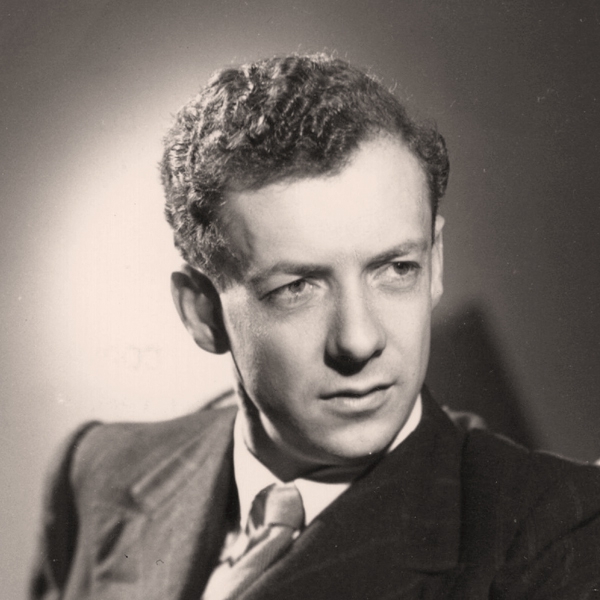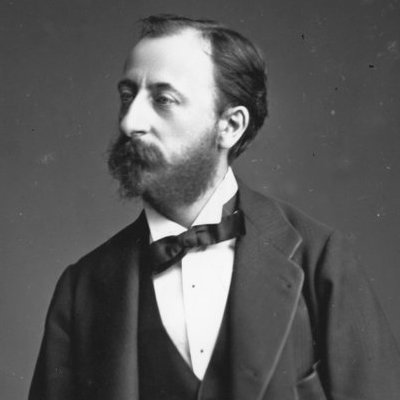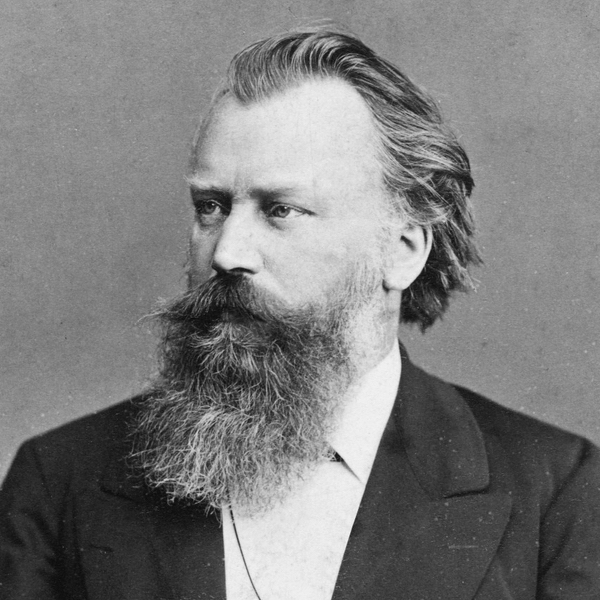Madison
Symphony Orchestra Program Notes
April
14-15-16, 2023
J.
Michael Allsen
This program
begins with the evocative Sea Interludes
from Britten’s dark and disturbing opera Peter
Grimes. The dynamic young Canadian violinist Blake
Pouliot played a
memorable performance of the Mendelssohn Violin
Concerto at these concerts in early 2020. Here he
returns to play another
romantic masterwork, the Violin Concerto
No. 3 by Saint-Saëns.
We close with the Symphony
No. 2 by
Brahms—the brightest and most optimistic of his
symphonies.
 Peter Grimes, was Britten’s
second opera. He extracted the orchestral Sea
Interludes heard here as the
opera was being prepared for its premiere.
Peter Grimes, was Britten’s
second opera. He extracted the orchestral Sea
Interludes heard here as the
opera was being prepared for its premiere.
Benjamin Britten
Born:
November
22, 1913, Lowestoft, United Kingdom.
Died:
December 4,
1976, Aldeburgh, United Kingdom.
Four Sea Interludes from “Peter
Grimes,” Op. 33a
- Composed:
1944-45.
- Premiere: The
opera Peter
Grimes opened on June 7,
1945 in London. Britten directed the London Philharmonic
Orchestra in the
premiere of the Sea
Interludes less
than a week later, on June 13, 1945 at the Cheltenham
Music Festival.
- Previous MSO
Performances:1970 and 1995.
- Duration: 16:00.
“In
ceaseless motion
comes and goes the tide.
Flowing,
it fills the
channel broad and wide.
Then
back to sea with
strong majestic sweep,
it
rolls in ebb yet
terrible and deep.”
-
Peter Grimes,
close of Act III (after
George Crabbe)
Background
Britten has often been cited as the first
really great English
opera composer since Henry Purcell in the late 17th century.
His dark,
psychological study of the fisherman Peter Grimes is one of
his finest works.
Peter
Grimes,
Britten’s first full-length opera, was a partly product of
the years he spent
in America during World War II. While browsing in a Los
Angeles bookstore in
1941, Britten came across a copy of The
Borough by the English pastor and poet George Crabbe
(1754-1832). Britten was
attracted by this picture of hard life in an English fishing
village, and
particularly drawn to the tragic story of Peter Grimes.
Britten and librettist
Montagu Slater expanded this story into an opera for a
commission by the
Koussevitsky Foundation, and he completed Peter
Grimes in 1945. Since its 1945 premiere, Peter Grimes has been recognized as one of
Britten’s best works,
and it has remained a part of the standard operatic
repertory.
The title character is a bitter,
reclusive fisherman who
lives near The Borough. The villagers suspect that Grimes
may have been
responsible for the death of his apprentice, mistrust that
only increases
Grimes’s isolation. A sympathetic widow, Ellen, and a
retired sailor named
Balstrode try to help him, but he rebuffs Balstrode’s
friendship and ultimately
refuses Ellen’s love. When a second apprentice dies under
suspicious
circumstances, the villagers become a mob, howling for
Grimes’s blood. In what
is certainly one of the most effective “mad scenes” ever
written, Grimes
descends into insanity as the angry crowd approaches. In the
end, Ellen and
Balstrode help Grimes set sail, and he sinks his boat far
out at sea. The
closing words of the opera (given above) are sung by the
inhabitants of The
Borough on the morning after Grime’s suicide, as they
continue life as if
nothing had happened.
It is often said about Britten’s opera Peter Grimes that the chorus is one of the
single most important
“characters” in the drama. Much the same might be said about
the sea, which
provides a constantly-changing background for the entire
story, and, in the
end, it is means of Grimes’s suicide. In describing his
opera, Britten wrote:
“For most of my
life, I have lived
closely in touch with the sea. My parents’ house in
Lowestoft directly faced
the sea, and my life as a child was coloured by the fierce
storms that
sometimes drove ships on to our coast and ate away whole
stretches of
neighbouring cliffs. In writing Peter
Grimes, I wanted to express my awareness of the
perpetual struggle of men
and women whose livelihood depends on the sea...”
What
You’ll Hear
There is a long tradition of depicting the sea
in musical works. Britten’s
Sea Interludes
captures the sea in
four remarkably different moods.
There are six brief orchestral interludes
in Peter Grimes,
one at the beginning of
each act, and one between the two scenes of each act. In Sea Interludes, Britten created a concert
suite from four of these
passages. Dawn
originally appeared
after the opera’s Prologue and before Act I, and paints a
picture of the
seashore at sunrise. You can hear the swirl of waves in the
woodwinds, and low
brass chords evoke the hidden depths of the sea. Near the
end, one great wave
washes the shore before the sea calms again. In Sunday Morning, from the beginning of Act II,
the villagers are
entering church. Horn chords play the part of church bells,
but a chattering
disquiet overlays what should be a tranquil scene.
Alternating with the bell
music is a more lyrical melody, which will be sung by Ellen
as the curtain
rises (“Glitter of waves and glitter of sunlight…”). Moonlight sets the stage for Act III.
Britten’s moonlight glitters
briefly on the sea, but the reigning mood of this section is
brooding and
lonely. The last of the Sea Interludes,
Storm, is drawn
from the middle of
Act I. Gale-force winds are pictured by brass, in violent
competition with the
strings. The tempest Britten has in mind seems not only to
be a storm at sea,
but also the storm in the mind and soul of Grimes.
 One of the balances that many 19th-century
composers tried to strike was to compose solo works that had
the virtuoso
thrills demanded by audiences and which also had real
musical substance. This
fine concerto by Saint-Saëns is one of the works that
manages to do both!
One of the balances that many 19th-century
composers tried to strike was to compose solo works that had
the virtuoso
thrills demanded by audiences and which also had real
musical substance. This
fine concerto by Saint-Saëns is one of the works that
manages to do both!
Camille Saint-Saëns
Born:
October 9,
1835, Paris, France.
Died: December 16,
1921, Algiers, Algeria.
Concerto No. 3 in B minor for Violin and
Orchestra, Op. 61
- Composed:
1880.
- Premiere: It is
dedicated to Pablo de Sarasate, who was the soloist in
the premiere in Paris,
on January 2, 1881.
- Previous MSO
Performances: 1927 (Gilbert Ross) and 1996 (Hilary
Hahn).
- Duration:
29:00.
Background
Saint-Saëns had a long
association with
the Spanish violinist Pablo de Sarasate (1844-1908), and
this concerto is the
most important of the works that came out of their
friendship.
The third
violin concerto by
Saint-Saëns is tied to his long friendship and working
relationship with one of
the 19th century’s greatest violin virtuosos, Pablo de
Sarasate. They met for
the first time when Sarasate was a 15-year-old prodigy and
Saint-Saëns was a
24-year-old composer/organist who already had a formidable
reputation. Sarasate
had always been disappointed by the trivial nature of much
of the virtuoso
music he was called upon to play, and met with Saint-Saëns
to ask for a more
weighty work. In his memoir, Saint-Saëns recalled this first
meeting:
“Flattered and charmed to the highest degree, I promised I
would, and kept my
word with the Concerto in A Major.” This work, composed in
1859 and published
as the Violin
Concerto No.1, was
never a great success, and is only rarely heard today.
However, in 1863
Saint-Saëns composed a second work for his young friend, the
Introduction and Rondo
Capriccioso. This
lightweight, Spanish-flavored showpiece became of the
mainstays of the
19th-century violin repertoire, and was performed countless
times by Sarasate
and other soloists. Their friendship continued as both
Sarasate and Saint-Saëns
matured, and some 17 years later, Saint-Saëns wrote his Violin Concerto No. 3 for his friend. Unlike
his early works for
Sarasate, this concerto is the work of a master composer at
the peak of his
form, and one who knew how to exploit all of the violin’s
capabilities. Saint-Saëns
tells of many pleasant “musical evenings” spent at his home
with Sarasate, and
this experience was put to good use in the Concerto
No.3.
What
You’ll Hear
The concerto is in
three movements:
• An opening
movement, featuring the violin
throughout, develops two contrasting themes.
• A lyrical movement
in the form of a barcarolle,
a gently rocking song in
6/8.
• A third movement
beginning with a dramatic
introduction, and continues as a rondo, dominated by a fiery
main theme.
During the
course of the
opening movement (Allegro
non troppo)
Saint-Saëns was able to use the whole expressive and tonal
range of the violin.
The movement opens with an energetic and passionate theme,
stated in the lowest
range of the violin, and set above quiet string tremolos.
There is a
transitional passage featuring spectacular double and triple
stops from the
soloist and a restatement of the opening theme by full
orchestra. The soloist
then introduces the second main theme, a lovely major-key
melody marked
“sweetly expressive.” The development focuses on the opening
theme, now
overlaid with ornamentation from the violin. The short
recapitulation begins
with the second theme, and closes with a reference to the
first theme, played
as the violin rises to stratospheric heights above the
orchestra.
The second
movement (Andantino
quasi allegretto) is a
dramatic contrast to the first. Its opening theme is a
lilting barcarolle-style
melody, sung by the
violin above sparsely-scored woodwinds, who echo the
violin’s phrases. The
contrasting middle section is also led by the violin. After
restatement of the
opening theme, the movement ends with a wonderful passage in
which Saint-Saëns
displayed both his knowledge of the violin and his mastery
of orchestration.
Here, the violin outlines a series of harmonies in its
highest register, set
against a clarinet playing at the very bottom of its
register, some three
octaves lower. In this ethereal atmosphere, the oboe closes
the movement with a
final statement of the barcarolle.
The closing
movement begins
with an agitated introduction (Molto
moderato e maestoso), a dialogue between the soloist
and orchestra. The
tempo quickens for the main body of the movement (Allegro non troppo), which is constructed as a
rondo, its
reoccurring main theme containing two contrasting ideas: a
brilliant theme
outlined by the violin, which dominates the entire movement,
and a more subdued
transition. The first contrasting section is a much more
lyrical idea, sung
again by the soloist. The central passage is a chorale
melody introduced by
muted strings and later picked up by the violin. This
chorale melody also
reappears, now fleshed out by the brass, in a substantial
coda filled with
virtuoso fireworks.
 Brahms composed his
second symphony less than a year after
completing his first, but they have entirely different
characters. The first
was a profoundly serious work in which Brahms was clearly
aware of the
expectations of supporters who had been waiting a long time for him to write a symphony. The
second is much more
relaxed and upbeat, the work of a composer who had proven
himself.
Brahms composed his
second symphony less than a year after
completing his first, but they have entirely different
characters. The first
was a profoundly serious work in which Brahms was clearly
aware of the
expectations of supporters who had been waiting a long time for him to write a symphony. The
second is much more
relaxed and upbeat, the work of a composer who had proven
himself.
Johannes Brahms
Born:
May 7,
1833, Hamburg, Germany.
Died:
April 3,
1897, Vienna, Austria.
Symphony No. 2 in D Major, Op.
73
- Composed: Summer 1877.
- Premiere:
December 30, 1877 by the Vienna Philharmonic Orchestra,
under the direction of
Hans Richter.
- Previous MSO Performances: 1943, 1956,
1965 1978, 1987, 1997, and
2009.
- Duration: 42:00.
Background
Brahms composed this work with
uncharacteristic speed while he
was spending the summer in a particularly lovely part of
Austria. His
relaxation and the natural beauty clearly seem to come
through in the symphony’s
bright music.
Brahms finished his second symphony
directly on the heels of
his first, but hard to find two symphonies by the same
composer more different
from one another. The first symphony was the result of
almost two decades of
sometimes agonizing composition and recomposition, while the
second was the
work of a single summer holiday spent at his favorite summer
retreat, the
lakeside resort town of Pörtschach in southern Austria. The
Symphony No.2, was
of a much happier and
lighter nature than the Symphony No.1,
and it was an immediate success.
The decade of the 1870s was a generally
happy and productive
period in Brahms’s life. After the premiere of his German Requiem in 1868, his international
reputation was secure,
and honors, commissions, and job offers came in an
ever-increasing stream. The
completion of his Symphony
No. 1 in
1876 marked the end of a long self-imposed apprenticeship in
symphonic
writing—a period of intense study and self-criticism that
had produced works
such as his two orchestral serenades, his first piano
concerto, and the Variations
on a Theme by Haydn. In some
sense, the happy nature of the Symphony
No. 2 must have reflected Brahms’s own happiness over
the end of this
intensely self-critical period. It is occasionally referred
to as his
“Pastoral” symphony: according to his own accounts, Brahms
composed it as a
reaction to the beauty of the countryside surrounding
Pörtschach.
What
You’ll Hear
It is in four movements:
• An opening
movement that spins all of its
material from the music heard in the opening
bars...including a second theme
you are sure to recognize!
• A slow movement
that works with four
distinct musical ideas.
• A scherzo-style
movement linked together by
a Haydnesque country dance.
• A large finale
that develops two contrasting
ideas before ending with a formidable coda.
The opening movement (Allegro
non troppo) of the Symphony No.2
is quiet and peaceful, a horn and woodwind melody above
hushed cellos and
basses. The importance of this introduction goes beyond
setting a mood,
however—the motives of this opening passage are the basis
for all of the
melodic material of the movement. This quiet opening section
gives way to a
flowing melody played by the violins. After a transitional
section, the cellos
and violas play a lovely cantabile
melody that is probably Brahms’s most familiar orchestral
theme. The
development is dense and contrapuntal, building in intensity
until a dissonant
proclamation from the trombones begins a long passage of
harmonic tension. The
recapitulation brings back all of the opening material and
is rounded off with
beautifully lyrical horn solo. The coda ends with a gentle
parody of a Viennese
waltz.
Beneath the calm surface of the second
movement (Adagio non
troppo) lies one of Brahms’s
most complex and original forms. Brahms bases this movement
upon four distinct
groups of melodic material and an exceedingly complicated
harmonic plan. The
opening theme, stated by the cellos, sounds simple enough,
but is notated in
such a way that it is offset from the barlines. (This may
not be apparent to
the listener, but sets up an underlying rhythmic tension.) A
contrasting
episode in 12/8 is set in syncopation above a background of
pizzicato strings.
Another 12/8 theme,
first in the violins, and then in woodwinds and solo horn,
is more placid, but
no less complex. A forceful passage from the full orchestra
introduces new
material, based on the opening theme, and the movement comes
to an understated
conclusion.
The third movement (Allegretto
grazioso) begins with a brief Ländler, an echo of
Austrian country dances
that sounds like a tribute to Haydn. Brahms then gives a nod
to Beethoven in
the scherzo that follows. The Ländler returns again, but is
quickly
overshadowed by more forceful minor-key music. Again, the
texture lightens, now
for a fast-paced new episode. The movement closes with a
densely contrapuntal
passage that fades away after a sustained chord from the
strings.
The finale (Allegro
con spirito) opens quietly, with a subdued theme
stated in the strings and
answered by the bassoon. This theme is subtly related to the
main theme of the
opening movement, tying the entire symphony together. This
hushed opening gives
no hint of what is to follow: a forceful transition section
that develops this
opening theme. A brief clarinet flourish leads into the
second them, a broad
syncopated melody stated by the strings. Near the end of the
development
section, the storm is broken by a brief tranquillo
episode that blends elements of the two main themes. The
recapitulation is cut
short by the trombones, with a dissonant statement of the
second theme’s
syncopated rhythm. The movement concludes with a long and
powerful coda.
________